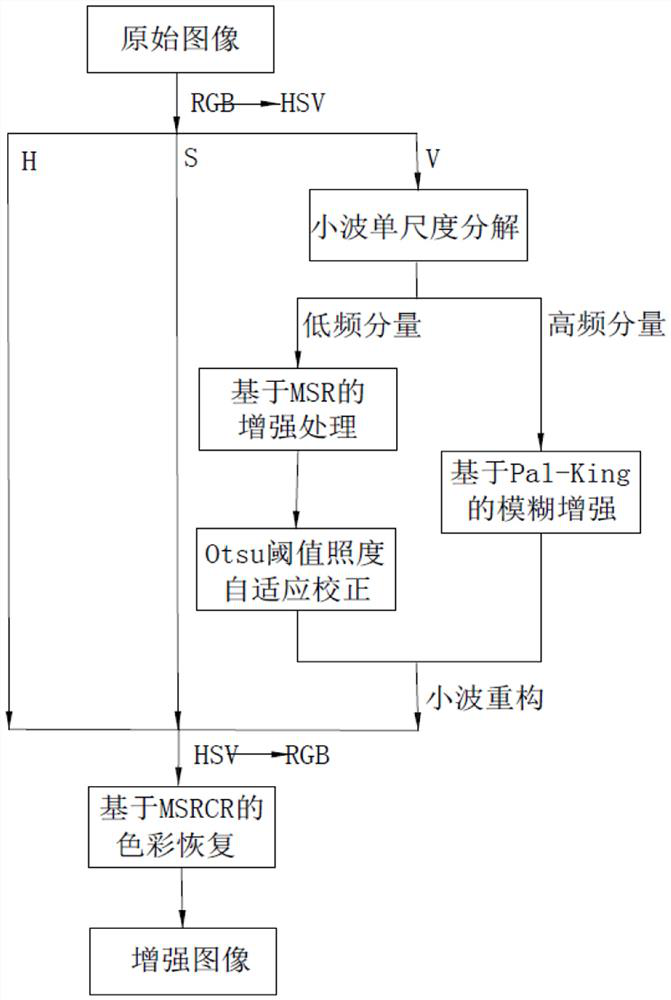Self-adaptive image enhancement method
An image enhancement and adaptive technology, applied in image enhancement, image analysis, image data processing and other directions, can solve the problems of blurred edge features and detail information, low contrast, color distortion, etc. Detail information, the effect of avoiding color distortion
- Summary
- Abstract
- Description
- Claims
- Application Information
AI Technical Summary
Problems solved by technology
Method used
Image
Examples
Embodiment
[0093] In order to verify the adaptive enhancement performance of the algorithm in this paper, different scene images collected in outdoor daytime, outdoor nighttime, and indoor daytime are selected for simulation experiments, and compared with the commonly used Contrast Limited AHE (CLAHE) method based on HSV The MSRCR algorithm (only the V component of the image is processed by the MSRCR algorithm in the HSV space, referred to as HSV-MSRCR) is compared, and evaluated by subjective visual effects and objective quality standards.
[0094] The parameters of the algorithm in this paper are set as follows: in the Otsu threshold method, the image stretch factor α=1.05, and the scale of the three Gaussian functions of the MSRCR algorithm is σ 1 =15, σ 2 =80, σ 3 = 250, color restoration parameters β = 0.75, γ = 6.5, the parameters of the comparison algorithm HSV-MSRCR and CLAHE are consistent with the parameters of the algorithm in this paper. The simulation results of different ...
PUM
 Login to View More
Login to View More Abstract
Description
Claims
Application Information
 Login to View More
Login to View More - R&D
- Intellectual Property
- Life Sciences
- Materials
- Tech Scout
- Unparalleled Data Quality
- Higher Quality Content
- 60% Fewer Hallucinations
Browse by: Latest US Patents, China's latest patents, Technical Efficacy Thesaurus, Application Domain, Technology Topic, Popular Technical Reports.
© 2025 PatSnap. All rights reserved.Legal|Privacy policy|Modern Slavery Act Transparency Statement|Sitemap|About US| Contact US: help@patsnap.com



